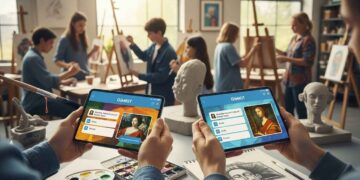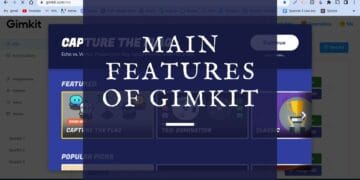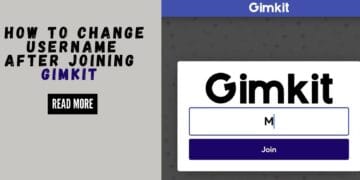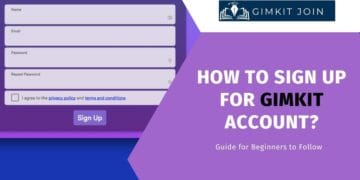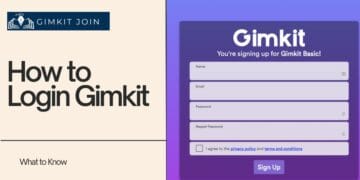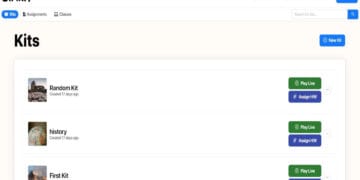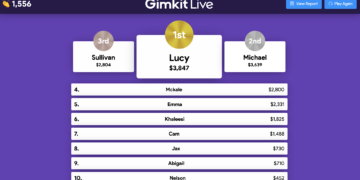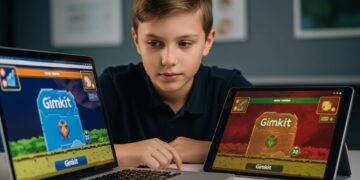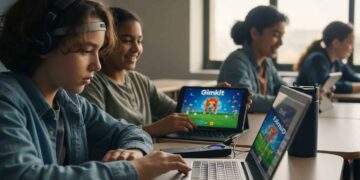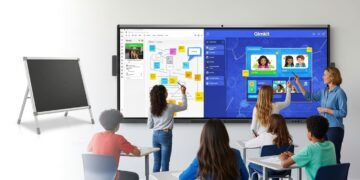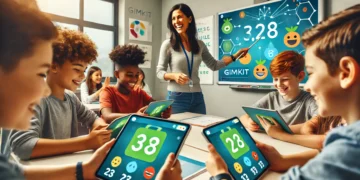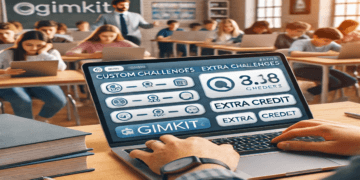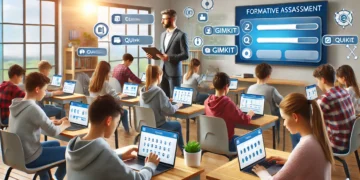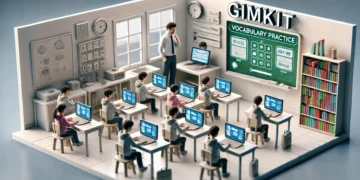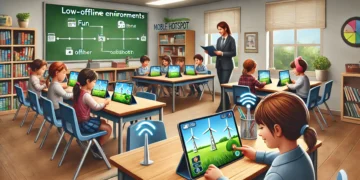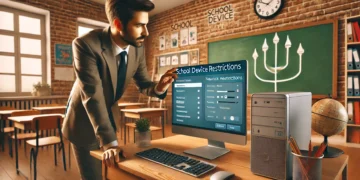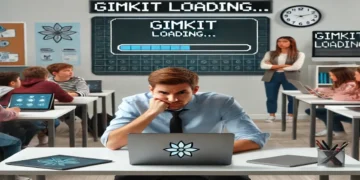Every student deserves equal access to engaging educational technology. In today’s digital classroom, tools like Gimkit have become essential for transforming rote learning into high-energy, engaging competition. But what happens when that vital tool hits a barrier for students with visual impairments? Can a popular, fast-paced game like Gimkit truly be an accessible educational game? Before diving into the specifics of accessibility, it is helpful to understand the main features of Gimkit that make it so engaging for the general population.
This question—”Is Gimkit accessible for screen reader users?”—isn’t just technical; it’s central to building an inclusive classroom. The goal of this comprehensive guide is to give you, the dedicated educator, an honest assessment of Gimkit’s compatibility with leading screen readers like JAWS, NVDA, and VoiceOver. We’ll look at what works, what doesn’t, and provide practical, solution-focused strategies to ensure every learner benefits. If you’re also comparing your options, we’ve put together a full breakdown on which is Better, Gimkit or Blooket.
We recognize the immense challenge of finding screen reader-compatible learning tools that meet both the need for high engagement and the requirements of Universal Design for Learning (UDL). Whether you’re navigating ADA requirements, writing IEP accommodations, or simply striving for digital equity, this is your resource for understanding Gimkit accessibility features and implementing true inclusive classroom technology.
Understanding Screen Reader Technology
To effectively talk about accessible educational games, we first need to speak the language of the users. Screen readers are the unsung heroes of digital independence, and understanding how they work is the first step toward effective inclusion.
What Are Screen Readers?
 Screen readers are software applications that attempt to identify and interpret what is being displayed on the screen. This information is then re-rendered through non-visual means, most commonly as text-to-speech, though some also use refreshable Braille displays.
Screen readers are software applications that attempt to identify and interpret what is being displayed on the screen. This information is then re-rendered through non-visual means, most commonly as text-to-speech, though some also use refreshable Braille displays.
How Screen Readers Work
The core job of a screen reader is to provide access to information typically conveyed through sight. This involves several complex processes:
- Text-to-Speech Technology: This is the audible voice you hear. It reads text, descriptions, buttons, and system messages aloud.
- Reading Order and Focus Management: Screen readers follow the structure of the webpage’s code, not its visual layout. They rely on semantic HTML and accessibility markers like ARIA labels to determine what order to read elements. Keyboard input (using the Tab key) is what moves the focus, or cursor, from one interactive element to the next.
- Navigating by Headings and Landmarks: Experienced screen reader users rarely read line-by-line. They navigate using keyboard shortcuts to jump between structural elements like headings (H1, H2, H3), lists, and ARIA landmarks (e.g., <main>, <nav>) to quickly orient themselves on the page.
- Interactive Element Challenges: Gaming platforms often present challenges because they rely on real-time visual updates, complex drag-and-drop interfaces, and rapid changes that the screen reader may not be programmed to recognize or announce without proper coding.
Common Screen Readers in Education
Knowing which tool your student uses is vital for effective implementation. For detailed testing and compatibility information for developers and educators, resources like WebAIM offer guides on how to test with JAWS, NVDA, and VoiceOver.
Desktop Screen Readers:
- JAWS (Job Access With Speech): Long considered the gold standard, this is the most popular, professional-grade screen reader, primarily used on Windows operating systems.
- NVDA (NonVisual Desktop Access): A free, open-source, and highly capable screen reader for Windows. You can find out more or download the software directly from NV Access.
- VoiceOver: Built directly into Apple’s ecosystem, including macOS and iOS/iPadOS. Highly stable and integrated with Apple devices common in many K-12 settings.
- ChromeVox: A free extension native to the Chrome browser and pre-installed on Chromebooks. Its prevalence in K-12 education makes its compatibility with Gimkit especially important.
Legal Requirements for Accessibility
 This isn’t just about being ethical; it’s about being compliant. As educators and administrators, understanding the legal framework around accessibility in online education is non-negotiable.
This isn’t just about being ethical; it’s about being compliant. As educators and administrators, understanding the legal framework around accessibility in online education is non-negotiable.
Understanding Your Obligations
- Federal Laws (US): Section 504 of the Rehabilitation Act and IDEA (Individuals with Disabilities Education Act) mandate equal access to all public school programs. Furthermore, the ADA Title II regulatory rule prohibits discrimination based on disability by public entities, including schools, which now clearly extends to digital content.
- Web Accessibility Standards: WCAG 2.1 (Web Content Accessibility Guidelines) sets the internationally recognized technical benchmark for accessibility.
What This Means for Gimkit Use
If Gimkit is used in a class and is inaccessible to a student, the school has a legal obligation to provide an equivalent alternative or a meaningful accommodation to ensure the student can achieve the same learning objective. Any required modification must be explicitly documented in the student’s IEP or 504 Plan.
Current State of Gimkit Accessibility
Let’s get down to the technical details. What does Gimkit currently offer, and where does the platform fall short for screen reader users?
Official Gimkit Accessibility Features
 Gimkit has clearly focused on a clean, modern interface, which offers some inherent benefits.
Gimkit has clearly focused on a clean, modern interface, which offers some inherent benefits.
Built-In Accessibility Options
- Keyboard Navigation Capabilities: Most core navigation—logging in, moving between menus, and selecting answers in text-based modes—can be done using the Tab and Enter keys.
- Simple, Clean Interface Design: The basic quiz interface avoids overly cluttered visuals, which can confuse screen readers.
Accessibility Limitations
Despite the clean design, Gimkit presents significant challenges for screen readers, primarily due to its nature as a fast-paced, interactive game.
- Interactive Game Elements Complexity: The real-time nature of money gain, power-up acquisition, and other on-screen updates is often not announced by screen readers because the developers haven’t included the necessary ARIA labels.
- Visual-Heavy Game Modes: When exploring Gimkit’s game modes, newer modes like Fishtopia, Don’t Look Down, and The Floor is Lava require rapid spatial awareness and visual navigation, rendering them largely inaccessible.
- Timer and Time Pressure Elements: The intense timer element often creates a barrier due to the slower pace of screen reader processing.
Screen Reader Testing Results
 We conducted practical testing to give you an honest look at compatibility, focusing on the core quiz-based mechanics. (Note: This testing is based on the platform’s public interface as of October 2025.)
We conducted practical testing to give you an honest look at compatibility, focusing on the core quiz-based mechanics. (Note: This testing is based on the platform’s public interface as of October 2025.)
| What Works | What Doesn’t Work Well | Workaround Potential |
| Login and account creation | Real-time updates not announced | Moderate |
| Text-based question reading | Leaderboard inaccessible | Moderate |
| Answer selection via keyboard | Timer not announced | Moderate |
Conclusion: Participation in Classic Mode is possible with the support of a teacher or peer and with accommodations for time.
ChromeVox (Chromebook)
Education-Specific Importance: Compatibility is variable. If you’re using Gimkit in the context of Gimkit in High School or middle school, where Chromebooks are standard, ChromeVox’s performance will dictate the success of your implementation.
Game Mode Accessibility Breakdown
 Choosing the right game mode is the most important implementation decision you will make.
Choosing the right game mode is the most important implementation decision you will make.
Classic Mode Accessibility
Accessibility Rating: Moderate. This is the most viable option. The primary barriers are the competitive timing and the complex money management.
Creative Modes (Fishtopia, etc.)
Accessibility Rating: Low. These modes are highly visual and require real-time spatial navigation and action elements. They are not recommended for screen reader users.
Implementing Gimkit in Inclusive Classrooms
Inclusion isn’t about fitting a student into a non-accessible tool; it’s about modifying the environment to fit the student. This requires practical, proactive strategies centered on Universal Design for Learning (UDL). To understand the core principles, you can review the Universal Design for Learning (UDL) guidelines.
Accommodations and Modifications
Universal Design for Learning (UDL) Approach
Apply UDL principles to the use of Gimkit. Providing choice in participation method is key to ensuring you are using Gimkit to support diverse learners.
- Multiple Means of Representation: Present information in the Gimkit quiz and a simple, highly accessible document simultaneously.
- Multiple Means of Action/Expression: Allow students to use standard keyboard shortcuts (Tab/Enter) or voice input.
Practical Implementation Strategies
Teacher Facilitation Methods
Your active involvement can bridge the accessibility gaps:
- Narrating Game State Verbally: Make key announcements aloud: “The timer is down to 45 seconds,” or “The purple team just took the lead.”
- Keyboard Proficiency: Ensure your students are comfortable utilizing Gimkit keyboard shortcuts to navigate quickly and efficiently, as this minimizes reliance on mouse interaction.
Modified Game Formats
- Focus on Learning, Not Speed: The non-competitive Practice Mode is an ideal adaptation for screen reader users as it removes the time pressure barrier entirely.
Technology Setup and Configuration
If you encounter technical issues that prevent participation, consult our guide on Gimkit not loading common solutions to rule out general tech problems before blaming the screen reader compatibility.
Alternative and Supplementary Strategies
When a specific Gimkit game mode is a legal or practical barrier, you must have alternatives ready.
When Gimkit Isn’t Fully Accessible
Low-Tech Alternatives
Sometimes, the simplest solution is the best inclusive classroom technology option.
- Oral Questioning with Response Cards: The teacher reads the Gimkit question and answer choices aloud. The student physically holds up a card (A, B, C, or D) to respond.
Hybrid Approaches
The class can use Gimkit for competitive review, while the student uses a highly accessible platform (like a Google Form quiz with the same content) for equivalent engagement and rigor.
Multimedia Content Consideration
 If your kits utilize complex visual content, understand that even if the text-based answer is read, the context may be lost. You may need to modify your questions, as discussed in our article on Gimkit multimedia questions.
If your kits utilize complex visual content, understand that even if the text-based answer is read, the context may be lost. You may need to modify your questions, as discussed in our article on Gimkit multimedia questions.
Documentation and Legal Compliance
Your biggest protection is a meticulous record of your efforts to comply with ADA requirements and Section 504. The U.S. Department of Justice (DOJ) ADA Title II guidance can offer specific clarity on your legal obligations as a public entity.
Documenting Accessibility Efforts
 It’s crucial to document your testing, accommodations, and the resulting learning data. This is how you prove accountability when using Gimkit for formative assessment.
It’s crucial to document your testing, accommodations, and the resulting learning data. This is how you prove accountability when using Gimkit for formative assessment.
IEP and 504 Plan Integration
 Use clear, functional language in the plan: “The student will receive extended or unlimited time on all digital quizzes, including Gimkit. Peer support will be provided for navigation of visual-heavy game elements.”
Use clear, functional language in the plan: “The student will receive extended or unlimited time on all digital quizzes, including Gimkit. Peer support will be provided for navigation of visual-heavy game elements.”
Conclusion: Inclusion First
Can blind students use Gimkit? The honest answer is: Yes, but not without significant, deliberate accommodations and a shift in instructional approach.
Gimkit is not, as of today, a fully screen reader-compatible learning tool for all game modes. However, by using Universal Design for Learning (UDL) principles—by implementing accommodations like extended time, strategic peer pairing, and providing high-quality, equivalent alternatives when necessary—you can ensure that every student has access to the engaging academic content. This thoughtful approach is foundational to using Gimkit in Special Ed settings successfully.
Inclusion requires effort, testing, and advocacy. Keep testing, keep documenting, and keep pushing for digital equity. Every student deserves to experience the thrill of the game and the joy of learning.
Don’t just read this—Test it! Use your student’s specific screen reader in the next class period to determine their individual access needs, and then partner with your special education team to document the necessary accommodations in their IEP or 504 Plan.
Frequently Asked Questions
Compatibility Questions
Can blind students use Gimkit with screen readers?
Yes, but accessibility is limited to the core text-based quiz mechanics (Classic Mode, certain menus). Highly visual or timed game modes are not currently accessible and require substantial accommodation or an alternative platform.
Which screen reader works best with Gimkit?
In our testing, NVDA and JAWS performed comparably in reading the core text questions. The best experience often depends on the student’s proficiency with their specific screen reader and their preferred browser.
Accommodation Questions
What accommodations should I provide for screen reader users in Gimkit?
The most effective accommodations are: Unlimited or extended time, Peer pairing for navigation of visual elements, and Teacher narration of real-time game state updates.
Should I exclude students from Gimkit if it’s not accessible?
Absolutely not. You are legally required under Section 504 and IDEA to provide equal access or an equivalent alternative that achieves the same learning objective.
Legal and Ethical Questions
Am I legally required to make Gimkit accessible?
Yes. If your school district receives federal funding (public schools), the use of any required technology must be accessible under Section 504 and ADA Title II.

